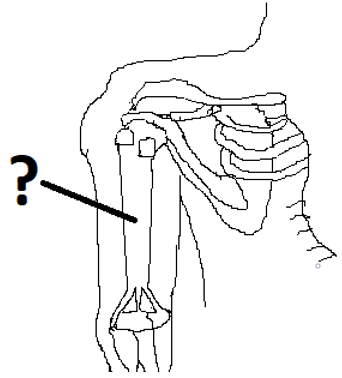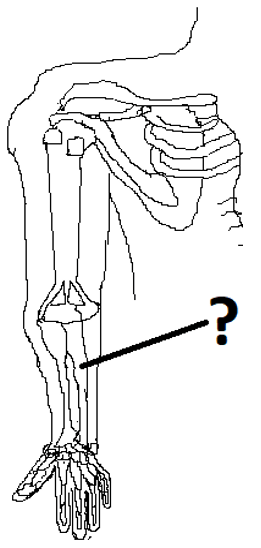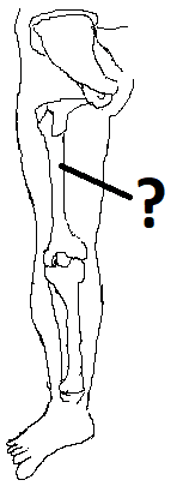This set of Class 11 Biology Chapter 20 Multiple Choice Questions & Answers (MCQs) focuses on “Locomotion and Movement” for NEET Preparation.
1. How many lumbar vertebrae are present in the vertebral column?
a) 7
b) 12
c) 1
d) 5
View Answer
Explanation: Humans possess 26 vertebrae in the vertebral column. These vertebrae are divided into five different regions, namely the cervical (7), thoracic (12), lumbar (5), sacral (1-fused) and coccygeal (1-fused) regions.
2. Which of these is not a function of the vertebral column?
a) Supports the head
b) Protects the spinal cord
c) Protects the vital organs
d) Point of attachment for ribs
View Answer
Explanation: The vertebral column has several important functions, which include protection of the spinal cord and providing support to the head. It also serves as a point of attachment for ribs. It does not protect all vital organs.
3. In which region is the sternum present?
a) Cervical
b) Lumbar
c) Thoracic
d) Coccygeal
View Answer
Explanation: The sternum or the breast bone is present in the thoracic region. It is a flat bone that is present in the midline of the thorax. The sternum is present ventrally in the body and helps in the attachment of ribs.
4. How many true ribs are present in the human body?
a) 7 pairs
b) 8 pairs
c) 9 pairs
d) 10 pairs
View Answer
Explanation: The human body has 12 pairs of ribs. They articulate with the vertebral column dorsally and with the sternum ventrally with the help of hyaline cartilage. First seven pairs of ribs are called true ribs.
5. With what are the ribs connected to the vertebral column?
a) Elastic cartilage
b) Hyaline cartilage
c) Fibro cartilage
d) Tendons
View Answer
Explanation: The human body has 12 pairs of ribs. The ribs articulate with the vertebral column dorsally and with the sternum ventrally with the help of hyaline cartilage. Hyaline cartilage is a precursor of bone.
6. Which of these is not a component of the rib cage?
a) Vertebral column
b) Ribs
c) Spinal cord
d) Sternum
View Answer
Explanation: The rib cage is formed out of skeletal structures, namely, the vertebral column, the ribs and the sternum. The spinal cord which runs through the vertebral column and is not a part of the rib cage.
7. What is the number of bones in each limb?
a) 30
b) 36
c) 26
d) 22
View Answer
Explanation: The number of bones in each limb is 30. The bones of all the limbs, along with their girdles, make up the appendicular skeleton. The appendicular and the axial skeleton are the two divisions of the skeletal system.
8. Identify the bone.

a) Femur
b) Ulna
c) Radius
d) Humerus
View Answer
Explanation: The given diagram shows the upper arm along with the shoulder and a few of the ribs. The bone of the upper arm is known as the humerus. Radius and ulna are the bones of the lower arm.
9. Identify the bone.

a) Tibia
b) Radius
c) Ulna
d) Fibula
View Answer
Explanation: The given diagram shows the arm along with the shoulder and a few of the ribs. Radius and ulna are the bones of the lower arm. Here, the ulna is shown. Tibia and fibula are the bones of the lower leg.
10. The 10th pair of ribs is known as floating ribs. True or false?
a) True
b) False
View Answer
Explanation: The human body has 12 pairs of ribs. The 8th, 9th and 10th pairs of ribs are known as false ribs as they join with the seventh rib with the help of hyaline cartilage. The 11th and the 12th pairs are the floating ribs.
11. How many palm bones do humans possess?
a) 14
b) 8
c) 7
d) 5
View Answer
Explanation: There are 30 bones in each forelimb or hand. These include the humerus, ulna, radius, carpals or wrist bones (8 in number), metacarpals or palm bones (5 in number) and phalanges (14 in number).
12. Which of these structures are present on the scapula?
a) Tibia
b) Patella
c) Acromion
d) Ischium
View Answer
Explanation: The acromion is a flat, expanded process present on the spine of the scapula. The spine of the scapula is a slightly elevated ridge which is present on the dorsal, flat and triangular body of the scapula.
13. Identify the bone.

a) Tibia
b) Humerus
c) Femur
d) Fibula
View Answer
Explanation: The given diagram shows the hind limb or the leg of the human body. The upper part of the leg consists of a single large bone known as the femur. The femur is the longest bone of the body.
14. Identify the bone.

a) Tibia
b) Ulna
c) Radius
d) Fibula
View Answer
Explanation: The given diagram shows the hind limb or the leg of the human body. The upper part of the leg consists of a single bone called the femur. The lower part of the leg has two bones-the tibia and the fibula.
15. Which of these bones is not a part of the coxal bone?
a) Ilium
b) Acromion
c) Ischium
d) Pubis
View Answer
Explanation: There are two coxal bones present in the pelvic girdle. Each coxal bone is formed by the fusion of three bones present in the pelvic girdle- the ilium, the ischium and the pubis. The acromion is a part of the scapula.
Sanfoundry Global Education & Learning Series – Biology – Class 11.
To practice all chapters and topics of class 11 Biology for NEET Exam, here is complete set of 1000+ Multiple Choice Questions and Answers.
If you find a mistake in question / option / answer, kindly take a screenshot and email to [email protected]
- Practice Class 12 - Biology MCQs
- Check Class 11 - Books
- Practice Class 11 - Physics MCQs
- Practice Class 11 - Chemistry MCQs
- Practice Class 11 - Mathematics MCQs
